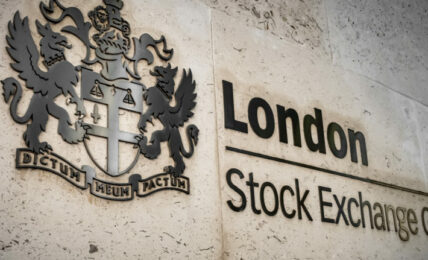Banks globally are split on whether they view various ESG factors primarily as risks or opportunities, according to a new study released by global management consultancy Bain & Company, which found that many banks plan to launch a range of green products and services over the next few years, though most have yet to integrate climate risks into credit underwriting practices.
For the study, Bain surveyed 55 banks together with the International Association of Credit Portfolio Managers (IACPM), and also carried out conversations with respondents, IACPM’s advisory council, as well as senior risk, finance and sustainability executives.
On both environmental transition and social issues, the survey found that the banks are roughly split between taking “Offensive” vs “Defensive” postures, with a slight leaning in both cases towards playing offense. Interestingly, while respondents assessed their current ESG positioning as in line to slightly ahead of their peers, a strong majority felt that their stated ambition of future ESG position was significantly ahead of their competitors.
The banks’ views of risks and opportunities varied significantly by region. For example, European banks appeared to be more bullish on environmental transition factors, with approximately 60% viewing these issues primarily as a source of opportunity or even an “opportunity to create strategic value,” fewer than a third of respondents in the Americas or Asia Pacific shared this view. On the other hand, while more than half of Americas respondents view social issues primarily as an opportunity, most Europeans consider social issues to be more of a risk or a balance of risk and opportunity.
One of the key initiatives being taken by most banks to capitalize on ESG opportunities is the development of new financial products and services. While the vast majority of banks already offer green bonds and sustainability bonds, 86% and 84%, respectively, the survey indicated that many more green products are likely on their way, such as green commercial building loans, with 73% of banks expecting to offer these within the next three years, compared to 54% today, green car loans, expected by 65% vs 49% today, and green deposits at 57% expected vs 32% today. Other areas slated for significant growth include carbon commodities, green savings accounts, and green credit cards.
The survey found that banks are at various stages of incorporating ESG risk, such as climate, into their activities. For example, 65% of banks said that they have yet to integrate climate data and metrics into credit underwriting processes, although around a quarter intend to do so within a year. European banks are farthest along in this metric, while only around one in five banks in the Americas have integrated these risks.
The report also examined some of the issues that may be hindering banks from incorporating ESG risks or addressing opportunities, with key factors including a lack of frameworks methodologies and tools – for example, while over 80% of respondents reported identifying physical and transition risks, only half have actually quantified this exposure – as well as the need to assign roles for ESG accountability.
A key issue affecting the banks’ approach to ESG is a lack of clarity on accountability and decision authority, according to the report. For example, the survey found that nearly two thirds of the banks have not yet defined who has primary accountability for identifying and addressing climate risk, and only about half of banks that have already made net zero commitments have integrated climate metrics into performance reviews.
Michael Kochan, partner in Bain & Company’s Financial Services practice, said:
“Incorporating ESG strategies into banking operations requires a delicate balance of managing risk and seizing opportunities. The gap between ESG aspirations and results has widened for many financial services institutions, despite increased pressure from stakeholders. Winners will focus strategy to create tangible value from climate-related products, services, and consulting.”
Click here to access the study results.
The post Banks Split on Views of ESG as Source of Risk vs Opportunity, Bain Study Finds appeared first on ESG Today.


